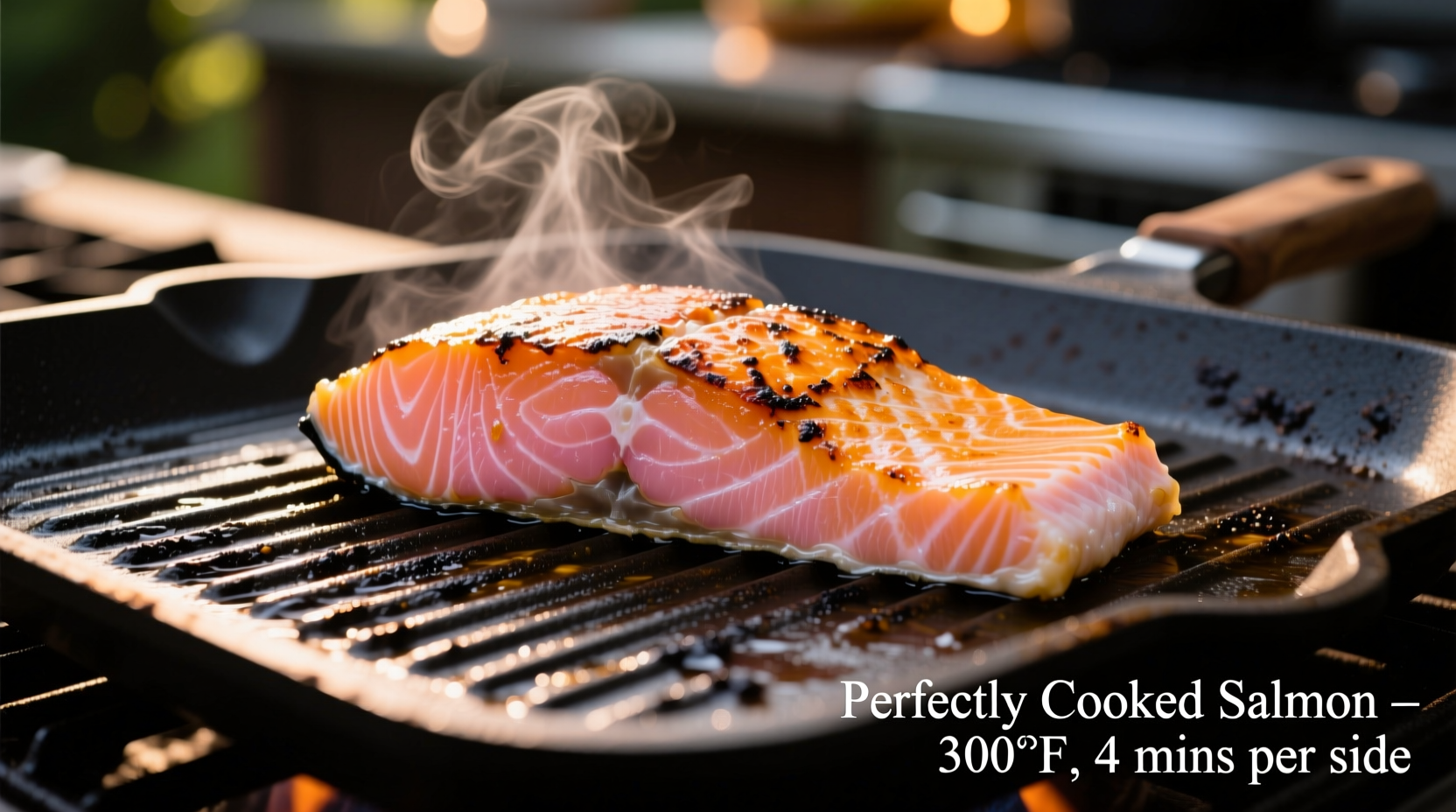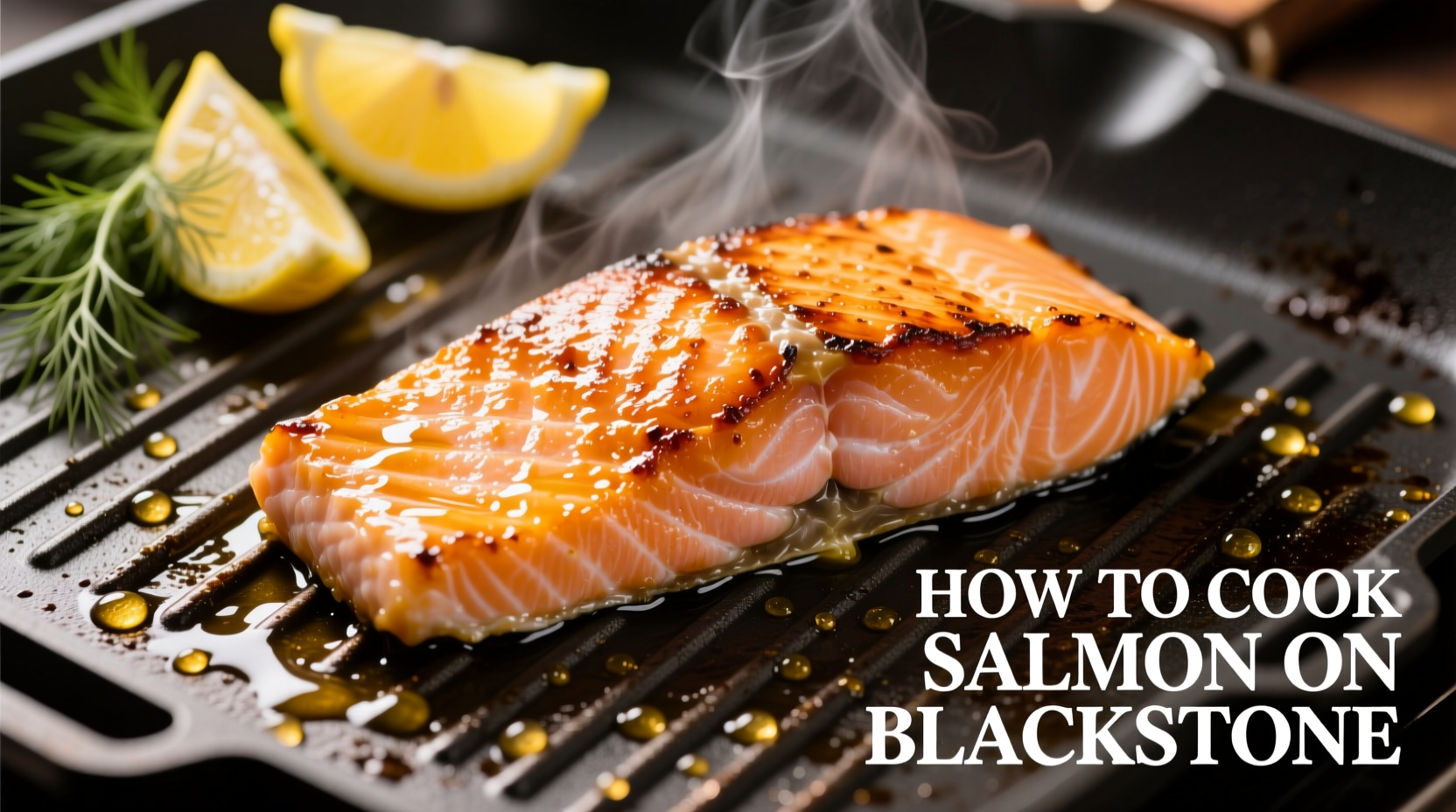The Blackstone Advantage for Perfect Salmon
Cooking salmon on a Blackstone griddle transforms this delicate fish into a weeknight dinner hero. Unlike traditional methods that risk overcooking or sticking, the Blackstone's cast-iron surface provides even heat distribution across the entire cooking surface. Professional chefs at the Culinary Institute of America note that consistent temperature control is the #1 factor in preventing dry, overcooked salmon.
According to Blackstone's official cooking guidelines, their griddles reach optimal cooking temperature in just 8-10 minutes, significantly faster than conventional ovens. This rapid preheat means you can go from craving to plating in under 20 minutes - perfect for busy weeknights when you want something healthy and impressive.
Essential Prep: Setting Up for Success
Before you even fire up your Blackstone, proper salmon preparation makes all the difference. Start with fresh, high-quality salmon - look for firm flesh with a bright color and clean ocean scent. The National Oceanic and Atmospheric Administration (NOAA) confirms that wild-caught Pacific salmon typically has a richer flavor profile than farmed varieties, though both work well on the griddle.
The critical step many home cooks skip? Thoroughly drying the salmon. Moisture is the enemy of a perfect sear. After rinsing, pat the fillets completely dry with paper towels, then let them sit uncovered in the refrigerator for 15-30 minutes. This simple technique, recommended by professional seafood chefs, creates the ideal surface for that beautiful golden crust.
| Salmon Thickness | Skin-Side Down Time | Second Side Time | Total Cooking Time |
|---|---|---|---|
| 1 inch | 6-7 minutes | 2-3 minutes | 8-10 minutes |
| 1.5 inches | 7-8 minutes | 3-4 minutes | 10-12 minutes |
| 2 inches | 8-9 minutes | 4-5 minutes | 12-14 minutes |
This cooking time guide follows USDA Food Safety and Inspection Service recommendations for proper fish preparation. Remember that cooking times vary based on your specific Blackstone model and ambient temperature.
Step-by-Step Blackstone Salmon Technique
Step 1: Preheat Properly
Fire up your Blackstone and let it heat to 375°F. Use an infrared thermometer to verify - this precise temperature prevents sticking while ensuring proper sear. Blackstone's official support site confirms this is the ideal range for most fish preparations.
Step 2: Oil Selection Matters
Contrary to popular belief, not all oils work equally well. The American Heart Association recommends high smoke point oils like avocado or canola for high-heat cooking. Apply a thin, even layer using a paper towel and tongs - never spray oil directly on a hot griddle.

Step 3: The Critical First Placement
Place salmon skin-side down with firm, confident contact. Resist the urge to move it for at least 5 minutes - this allows the proteins to sear properly. According to chef instructors at the Institute of Culinary Education, premature movement is the #1 cause of sticking.
Step 4: Flip and Finish
When the edges turn opaque and the salmon releases easily, flip with a thin, flexible spatula. Cook 2-3 minutes more until the internal temperature reaches 145°F at the thickest part. The FDA Food Code specifies this as the safe minimum internal temperature for fish.
Step 5: Rest Before Serving
Let salmon rest for 3-5 minutes off the heat. This crucial step, emphasized by professional chefs worldwide, allows juices to redistribute for maximum moisture retention.
Avoid These Common Blackstone Salmon Mistakes
Mistake: Overcrowding the griddle
Leaving proper space between fillets ensures even cooking. When salmon steams instead of sears, you lose that beautiful crust.
Mistake: Skipping the oil temperature test
Before adding salmon, flick a few water droplets on the surface. They should dance and evaporate immediately. If they sizzle violently, it's too hot; if they sit and bubble slowly, it's not hot enough.
Mistake: Using the wrong seasoning
Heavy spice blends can burn at high temperatures. For perfect Blackstone salmon seasoning, keep it simple: salt, pepper, and a light sprinkle of garlic powder work best. Add delicate herbs like dill or parsley after cooking.
Three Flavor Variations to Try
Lemon-Herb Simplicity
After flipping, add a pat of butter, lemon slices, and fresh herbs directly to the griddle. Baste the salmon with the melted butter mixture for incredible flavor infusion.
Honey-Soy Glaze
In the last 2 minutes of cooking, brush with a mixture of 1 tbsp honey, 1 tsp soy sauce, and 1/2 tsp rice vinegar. Watch carefully to prevent burning.
Cajun Blackened Style
Coat salmon generously with Blackstone-approved Cajun seasoning before cooking. The high heat creates a flavorful crust while keeping the interior moist.
Serving Suggestions and Leftover Ideas
Pair your perfectly cooked Blackstone salmon with quick-cooking sides right on the griddle: asparagus, zucchini, or even corn. The USDA Dietary Guidelines recommend filling half your plate with vegetables for balanced nutrition.
For leftovers, flake cooled salmon into salads or mix with cream cheese for delicious salmon spread. Properly stored in an airtight container, cooked salmon remains safe to eat for 3-4 days according to FDA guidelines.
Troubleshooting Your Blackstone Salmon
If salmon sticks: The griddle wasn't hot enough or the fish wasn't dry enough. Next time, increase preheat time and ensure thorough drying.
If skin isn't crispy: The temperature might be too low. Verify with an infrared thermometer and adjust accordingly.
If salmon dries out: Overcooking is the culprit. Use a meat thermometer and remove salmon at 140°F - it will continue cooking during the resting period to reach the safe 145°F.











 浙公网安备
33010002000092号
浙公网安备
33010002000092号 浙B2-20120091-4
浙B2-20120091-4